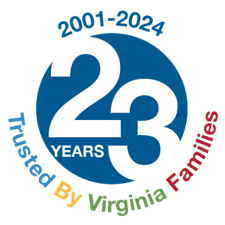As we come to the end of another year, many of us are making resolutions for 2022, including many Veterans who are resolving to return to the classroom to prepare for future careers outside of the military. Student Veterans come from a variety of backgrounds and experiences, and some may have disabilities associated with their time in service. Higher education support services may be available.
To educate and support those Veterans with disabilities, Paralyzed Veterans of America, Student Veterans of America and Wounded Warrior Project partnered with the PsychArmor Institute to produce two informational courses with accompanying introductory videos. These videos – featuring Veterans with disabilities who successfully navigated school – are designed to assist student Veterans with their academic journey.
Getting Started
The first course focuses on “why” Veterans with disabilities should pursue higher education. As former student Veteran Shaun Castle shared, “Since your transition from the military, you may have wondered if going to college is the right choice for you. Because of your service, you are very different from the typical college student. Your injuries, whether visible or invisible, in addition to your experience in the world, make you unique.”
You aren’t a typical college student. You aren’t fresh out of high school. Maybe you’re fresh from the battlefield. And your path to higher education is also different from a conventional student’s. And that’s ok. This course will help you navigate your path to the degree that prepares you for your post-military career.
View the introductory video at https://psycharmor.org/courses/pva01/, then follow the link to register for the course.
Know Your Rights
“You don’t look disabled,” a professor once told former student Veteran Maureen Elias as she asked about testing alternatives due to an injury connected to her wrist that made it difficult for her to take a written essay exam. Veterans with an acquired disability may not be aware of how to navigate accessibility offices or how to request accommodations. Worse, some may think of the accommodations as a “hand out” rather than support that is an equalizer.
Five common accommodations for students with disabilities include:
- Removing physical barriers to provide access to buildings.
- Changing a classroom environment or task to allow a student with a disability to participate.
- Modifying policies, practices or procedures.
- Providing auxiliary aids and services.
- Making other adaptations or modifications that enable a student to participate in the college’s programs, services and activities.
The second course in the series outlines the value and process for seeking appropriate assistance and support through your school’s accessibility or disability office. View the introductory video at https://psycharmor.org/courses/pva02/, then follow the link to register for the course.
Wherever you are in your educational journey, we encourage you to watch these short videos to better prepare yourself for what is next. To learn more about educational resources for Veterans, visit https://psycharmor.org/paralyzed-veterans-america-course/.
